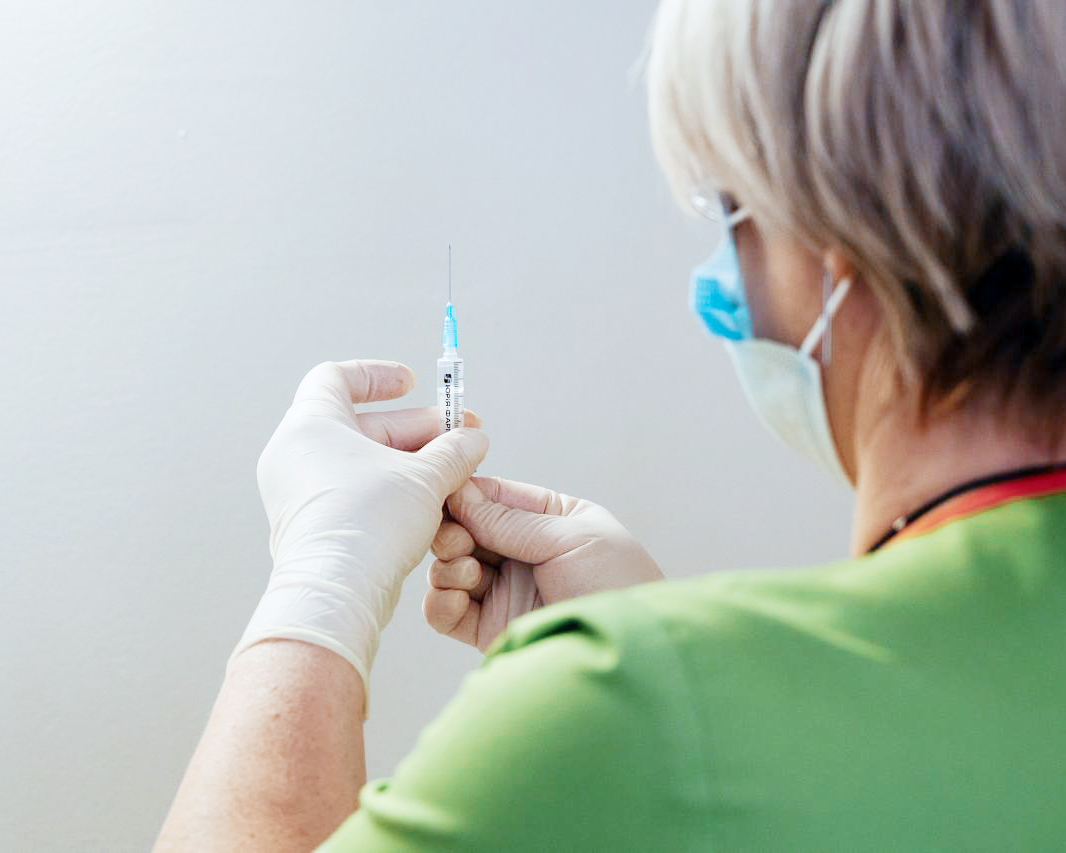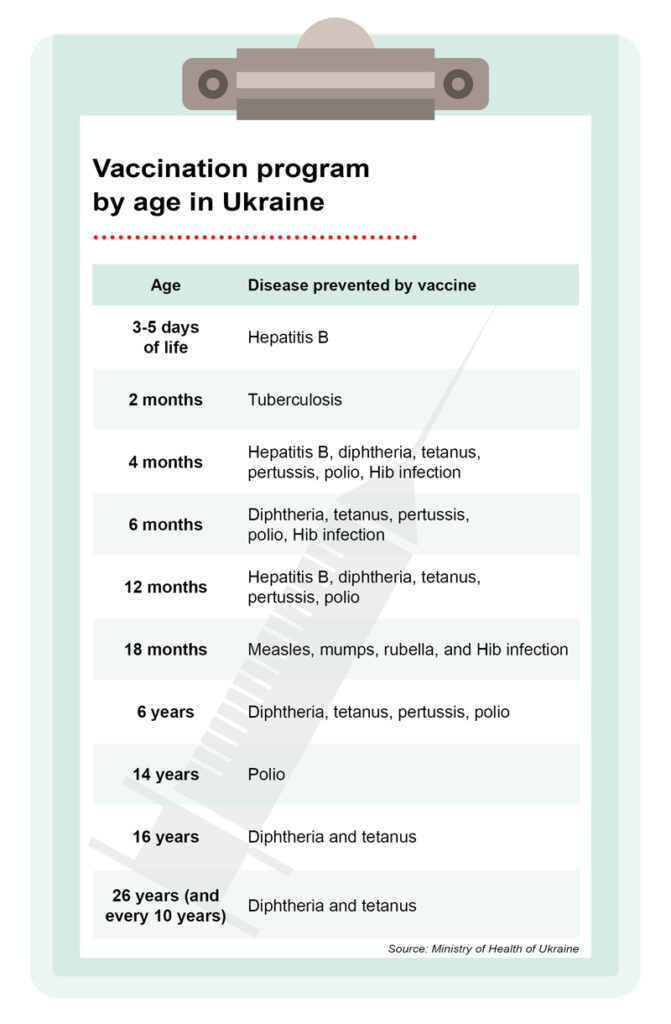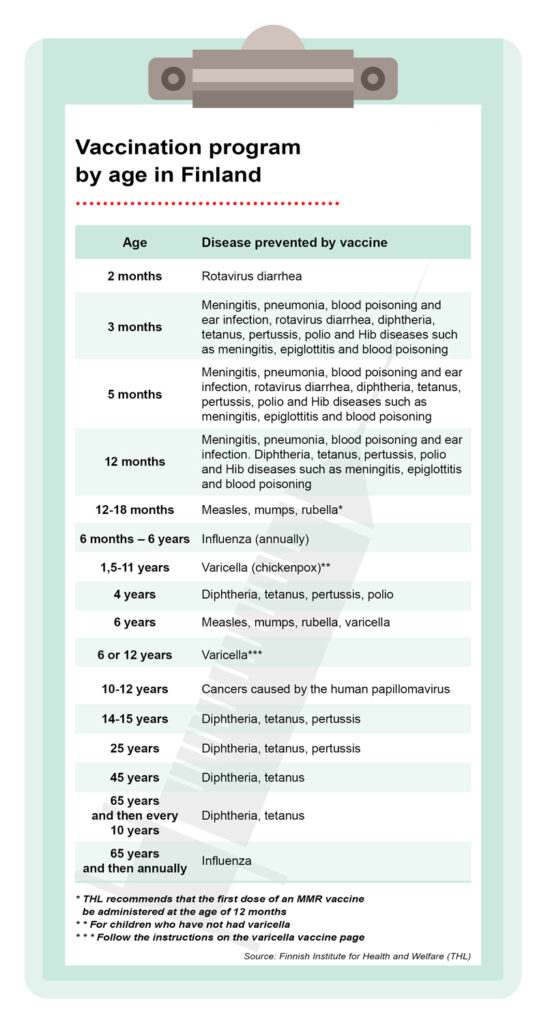Low vaccination rates of Ukrainians could lead to the spread of severe diseases

Ukraine has one of the most advanced vaccine storage systems, ensuring proper temperature control even during long power outages. However, vaccination rates remain low. PHOTO: MINISTRY OF HEALTH OF UKRAINE
Svitlana Yeharmina
Oleksandr Reshetnikov
Published 03.06.2024 at 11:41
Updated 03.06.2024 at 11:41
At the beginning of the year 2024, a 73-year-old woman in the Kyiv region succumbed to diphtheria. It was the first fatality from this disease in a decade. The patient had not been vaccinated. She sought medical help too late to change the outcome.
Diphtheria, an infectious disease transmitted via airborne droplets, is classified by the World Health Organisation (WHO) as frequently fatal. Vaccination remains the most effective safeguard, recommended both for children and adults.
The Ministry of Health of Ukraine advises adults to receive a booster dose every 10 years. Yet, only 50 % of the adult population is vaccinated against diphtheria, far below the 95 % needed for stable herd immunity.
Ukraine has a low vaccination rate
Ukraine’s low vaccination rates extend beyond the diphtheria-tetanus (DT) vaccine. No vaccines recommended by the national immunization program achieve the 95% coverage goal.
Vaccination against measles, mumps, and rubella (MMR) has the highest uptake, with over 90% of Ukrainians fully vaccinated. Conversely, tuberculosis vaccination rates are dismal, covering less than 40% of children. Rates for polio (62%), Hib infection (78%), and hepatitis B (66%) also lag.
Availability of the vaccines is not the issue in Ukraine. Routine vaccinations are available for free at public clinics or for a fee at private clinics. During the pandemic, hospital vaccine storage systems were upgraded to modern standards, and even during the ongoing war, there has been no shortages.
The low vaccination rate stems more from widespread public distrust in domestic healthcare, which has been caused by several high-profile vaccination scandals, and exacerbated by anti-vaccination propaganda, which is often fueled by pro-Kremlin media and bloggers.
The most serious of the scandals is the death of Anton Tyshchenko, an 11th grade student from the Donetsk region in 2009.
The parliamentary commission concluded that Tyshchenko died of complications caused by the MMR vaccine. When 18 other students from the same school filed side effect complaints about the same vaccine, public trust plummeted.
Covid-19 pandemic and the outbreak of the full scale war haven’t improved the situation.
Periodic outbreaks of infectious diseases in Ukraine underscore the need for better vaccination coverage. Recently, pertussis surged in the Vinnytsia region, and epidemiologists anticipate a measles outbreak this year. Because of the low vaccination rate, the disease breaks out in Ukraine every 5 years.
Vaccination challenges for Ukrainians
Since the Russian full-scale invasion of Ukraine in February 2022, over 60,000 Ukrainians have relocated to Finland. Majority of them are working-age women with children.
The Finnish Institute for Health and Welfare (THL) advises migrants from Ukraine to get vaccinated against measles, diphtheria, poliomyelitis, and COVID-19. Mumps and rubella vaccines are also available free of charge. Children under temporary protection can access the Finnish national vaccination program.
Vaccination in Finland is voluntary, and tracking rates among Ukrainians poses challenges.
“We only monitor vaccination rates by vaccines given in Finland, not by country of origin. We don’t even get that kind of data,” says Nina Strömberg, an infectious disease control specialist at THL. New arrivals undergo lung CT scans to rule out tuberculosis, given Ukraine’s high prevalence of the disease.
Cross-border health risks
UNICEF warns that disruptions in Ukraine’s medical services and mass displacement could facilitate the spread of infections beyond its borders. Frequent travel between Finland and Ukraine, as evidenced by the demand for FlixBus routes, exacerbates this risk. Close contacts within the Ukrainian community increase the potential for outbreaks.
While Finland’s high vaccination rate offers some protection, vulnerable groups, such as infants and immunocompromised individuals, remain at risk. Pertussis poses a significant threat to infants, and other infectious diseases can be perilous for the elderly and those with weakened immune systems.
Hepatitis B vaccination is not routine in Finland due to the disease’s low prevalence. However, Ukraine’s high hepatitis B infection risk means that many evacuees lack immunity, particularly those born before the mid-1990s, when childhood vaccination commenced.
In spring 2022, with millions of Ukrainians resettling across Europe, the WHO, alongside the European Association for the Study of the Liver and the European Centre for Disease Prevention and Control, appealed to the EU to provide free hepatitis B vaccines to Ukrainians, citing the high risk of transmission.

